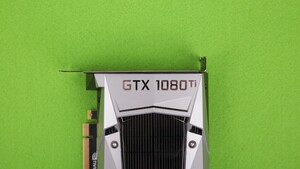- Registriert
- Apr. 2005
- Beiträge
- 589
Hallo Community,
Ich hab mir bereits die zahlreich vorhandenen Threads hier im Forum zu meinem Problem durchgelesen, hat mir jedoch bei meinem Problem nicht geholfen. Über Google find ich auch keine wirkliche Lösung, deshalb frage ich direkt nach.
Zunächst mal die Situation:
Bis vor 2 Tagen hatte ich im Rechner eine einzige Festplatte drin, mit 2 Partitionen, auf der einen ist WinXP Pro 32Bit SP3 drauf, die andere ist eine leere NTFS Partition für Backups.
Dann entdeckte ich im Schrank noch ne alte 30GB Festplatte, und aus Langeweile wollte ich darauf wieder einmal Kubuntu installieren, um ein wenig darauf experimentieren zu können.
Ich habe Kubuntu 8.04.1 dann auf die zweite Platte installiert und die Partitionierung dem Installationsprogramm überlassen. Bei der Installation habe ich als Zielort für GRUB ebenfalls die zweite Platte ausgesucht, damit der MBR von Windows nicht überschrieben wird. Die Installation hat soweit ohne Probleme geklappt.
Wenn ich nun im GRUB Bootloader Kubuntu wähle kommt die Fehlermeldung
"Error 17: Cannot mount selected partition".
WinXP lässt sich ebenfalls nicht booten, wobei folgende Fehlermeldung erscheint: "Error 13: Invalid or unsupported executable format".
Wenn ich im BIOS unter Boot Device Priority lediglich meine WinXP Platte auswähle und sonst keine weitere, lässt sich Windows normal booten. Kubuntu kann ich überhaupt nicht booten, auch nicht mit Hilfe der Live-CD.
Hat jemand Ideen, wie ich das Problem lösen kann? Würde mich über jeden Vorschlag freuen.
Nochmal ausführliche Infos zur Hard-/Software:
AMD Sempron 2300+
ASRock K7VT4A+
768 MB RAM
HD0 200GB Seagate IDE Platte mit WinXP Pro 32Bit SP3 (Master)
HD1 30GB Seagate IDE Platte (Slave)
MfG gammlos
Ich hab mir bereits die zahlreich vorhandenen Threads hier im Forum zu meinem Problem durchgelesen, hat mir jedoch bei meinem Problem nicht geholfen. Über Google find ich auch keine wirkliche Lösung, deshalb frage ich direkt nach.
Zunächst mal die Situation:
Bis vor 2 Tagen hatte ich im Rechner eine einzige Festplatte drin, mit 2 Partitionen, auf der einen ist WinXP Pro 32Bit SP3 drauf, die andere ist eine leere NTFS Partition für Backups.
Dann entdeckte ich im Schrank noch ne alte 30GB Festplatte, und aus Langeweile wollte ich darauf wieder einmal Kubuntu installieren, um ein wenig darauf experimentieren zu können.
Ich habe Kubuntu 8.04.1 dann auf die zweite Platte installiert und die Partitionierung dem Installationsprogramm überlassen. Bei der Installation habe ich als Zielort für GRUB ebenfalls die zweite Platte ausgesucht, damit der MBR von Windows nicht überschrieben wird. Die Installation hat soweit ohne Probleme geklappt.
Wenn ich nun im GRUB Bootloader Kubuntu wähle kommt die Fehlermeldung
"Error 17: Cannot mount selected partition".
WinXP lässt sich ebenfalls nicht booten, wobei folgende Fehlermeldung erscheint: "Error 13: Invalid or unsupported executable format".
Wenn ich im BIOS unter Boot Device Priority lediglich meine WinXP Platte auswähle und sonst keine weitere, lässt sich Windows normal booten. Kubuntu kann ich überhaupt nicht booten, auch nicht mit Hilfe der Live-CD.
Hat jemand Ideen, wie ich das Problem lösen kann? Würde mich über jeden Vorschlag freuen.
Nochmal ausführliche Infos zur Hard-/Software:
AMD Sempron 2300+
ASRock K7VT4A+
768 MB RAM
HD0 200GB Seagate IDE Platte mit WinXP Pro 32Bit SP3 (Master)
HD1 30GB Seagate IDE Platte (Slave)
MfG gammlos



